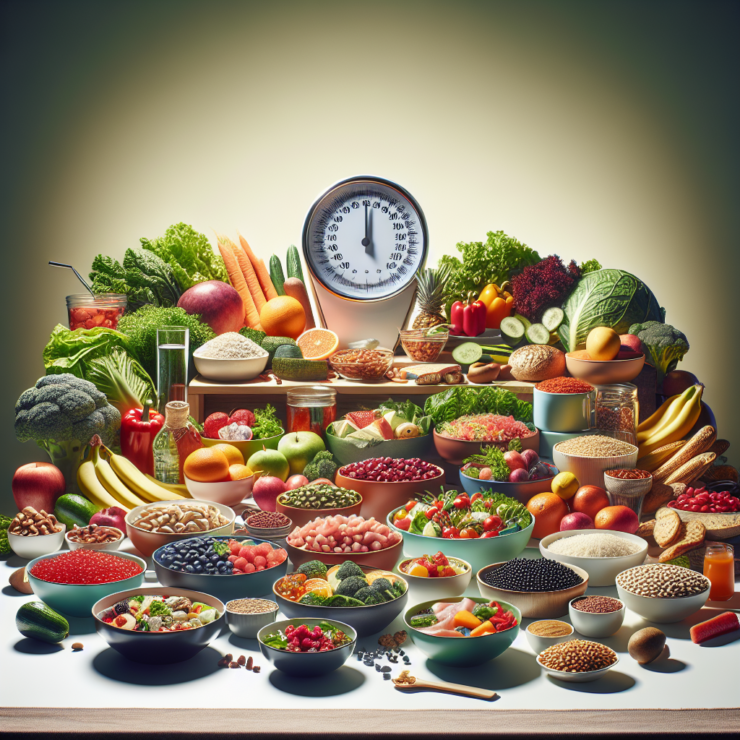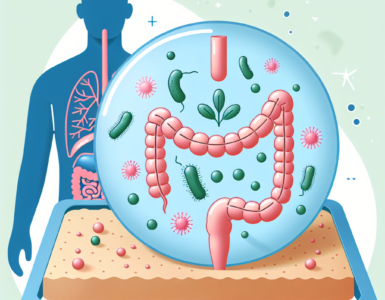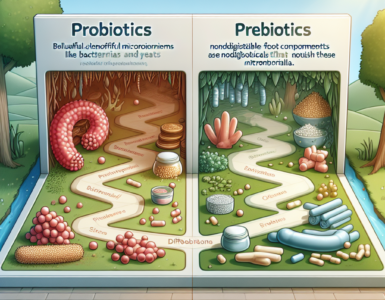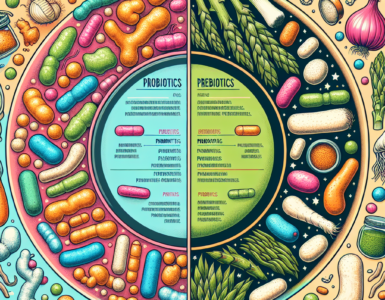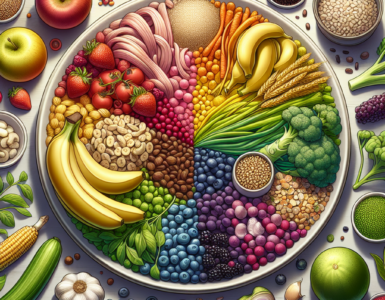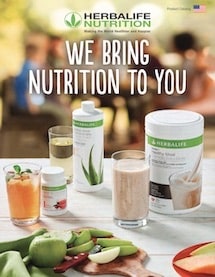The Calorie Deficit Approach to Weight Management
Understanding Calorie Deficit
A calorie deficit occurs when an individual consumes fewer calories than their body requires to maintain its current weight. This deficit forces the body to utilize stored fat as a source of energy, leading to weight loss. It’s a fundamental concept in weight management, grounded in the principle of energy balance.
To establish a calorie deficit, one must first understand their Basal Metabolic Rate (BMR) — the number of calories the body needs at rest to maintain life-sustaining functions. Combining this with the level of physical activity gives an estimate of daily caloric needs. A deficit is then created by reducing caloric intake, increasing physical activity, or a combination of both.
| Activity Level | Calorie Adjustment for Deficit |
|---|---|
| Sedentary | Reduce by 500-750 calories/day |
| Moderately Active | Reduce by 500-750 calories/day |
| Very Active | Reduce by 500-750 calories/day |
Benefits of Low-Calorie Meals
Low-calorie meals are integral to achieving a calorie deficit while still providing the body with the essential nutrients it needs. These meals can help individuals:
- Lose weight effectively without drastic dietary changes.
- Improve metabolic health by reducing the intake of excess calories that can lead to weight gain and associated health issues.
- Maintain muscle mass when combined with adequate protein intake, as a calorie deficit can sometimes lead to muscle loss.
- Enhance overall well-being, as low-calorie meals often include a high proportion of nutrient-dense foods such as fruits, vegetables, and lean proteins.
Incorporating easy low-calorie meals into one’s diet doesn’t just contribute to weight loss goals but also fosters long-term healthy eating habits. By focusing on wholesome ingredients and satisfying flavors, these meals can help individuals enjoy their diet while managing their weight effectively.
Planning for Low-Calorie Meals
Creating meals that are low in calories yet full of taste and nutrition requires thoughtful planning. Understanding the components that make up low-calorie cooking and how to balance these effectively is essential for a satisfying meal plan.
Key Ingredients for Low-Calorie Cooking
When it comes to low-calorie cooking, selecting the right ingredients is pivotal. Ingredients rich in nutrients but low in calories are the cornerstone of these meals. Incorporating a variety of vegetables, lean proteins, and whole grains can offer a balanced diet without excessive caloric intake.
| Ingredient Type | Examples |
|---|---|
| Vegetables | Broccoli, Spinach, Bell Peppers |
| Lean Proteins | Chicken Breast, Tofu, Legumes |
| Whole Grains | Brown Rice, Quinoa, Whole Wheat Pasta |
| Fruits | Berries, Apples, Oranges |
| Healthy Fats | Avocado, Nuts, Olive Oil |
These ingredients can be mixed and matched to create flavorful and nourishing meals. Vegetables provide volume and fiber, which help in feeling full. Lean proteins are essential for muscle repair and satiety. Whole grains add essential nutrients and sustained energy, while fruits offer natural sweetness and variety. Healthy fats are crucial for absorption of fat-soluble vitamins and provide a feeling of fullness.
Balancing Nutrition and Flavor
Balancing nutrition and flavor is vital for meal satisfaction. This balance ensures meals are enjoyable and prevent feelings of deprivation, which can often accompany a calorie deficit diet.
Incorporating a variety of herbs and spices can greatly enhance the flavor of meals without adding significant calories. Techniques such as roasting or caramelizing can bring out the natural sweetness in vegetables, making them more palatable. The use of citrus zest or vinegar can add a bright freshness to dishes, reducing the need for added salt or fat.
| Flavor Enhancers | Uses |
|---|---|
| Herbs | Basil, Cilantro, Rosemary |
| Spices | Cumin, Chili Powder, Paprika |
| Citrus | Lemon zest, Lime juice |
| Vinegars | Balsamic, Apple Cider |
By combining these flavor enhancers with the key ingredients listed above, individuals can enjoy satisfying meals that support their weight management goals. The judicious use of such elements can turn even the simplest of dishes into a delightful culinary experience, ensuring that the journey towards weight loss is not just effective but also enjoyable.
10 Easy Low-Calorie Meals
Creating satisfying meals that are also low in calories can be a simple and delicious process. The following meal options are designed to fit into a calorie deficit eating plan, offering both taste and nutrition without the surplus calories.
Breakfast Options
Oatmeal with Fresh Berries
A warm bowl of oatmeal topped with an assortment of fresh berries is a fiber-rich choice to start the day. Berries add natural sweetness and are packed with antioxidants.
| Ingredient | Serving Size | Calories |
|---|---|---|
| Oats | 1/2 cup | 150 |
| Blueberries | 1/2 cup | 42 |
| Strawberries | 1/2 cup | 27 |
Egg White Scramble with Spinach
Egg whites are a protein-packed option with lower calories than whole eggs. Scrambled with nutrient-dense spinach, this meal is both filling and heart-healthy.
| Ingredient | Serving Size | Calories |
|---|---|---|
| Egg Whites | 3 | 51 |
| Spinach | 1 cup | 7 |
Lunch Options
Mixed Greens Salad with Lean Protein
A salad composed of mixed greens and a lean protein such as grilled chicken or tofu can be a light yet satisfying lunch option, providing essential nutrients without excessive calories.
| Ingredient | Serving Size | Calories |
|---|---|---|
| Mixed Greens | 2 cups | 20 |
| Grilled Chicken Breast | 3 oz | 128 |
Vegetable Soup with Whole Grain Bread
A hearty vegetable soup paired with a slice of whole grain bread makes for a comforting and fiber-rich lunch. This combination is great for those seeking warmth and satiety.
| Ingredient | Serving Size | Calories |
|---|---|---|
| Vegetable Soup | 1 cup | 75 |
| Whole Grain Bread | 1 slice | 69 |
Dinner Options
Grilled Chicken with Steamed Vegetables
Grilled chicken served alongside a variety of steamed vegetables is a classic dinner choice. It’s high in protein and provides an array of vitamins and minerals.
| Ingredient | Serving Size | Calories |
|---|---|---|
| Grilled Chicken Breast | 4 oz | 170 |
| Steamed Broccoli | 1 cup | 55 |
Baked Fish with Quinoa Salad
Baked fish, known for its omega-3 fatty acids, coupled with a quinoa salad rich in protein and fiber, offers a balanced and nourishing evening meal.
| Ingredient | Serving Size | Calories |
|---|---|---|
| Baked Fish | 4 oz | 145 |
| Quinoa | 1/2 cup | 111 |
Snacks and Small Bites
Greek Yogurt with Honey and Nuts
Greek yogurt, with a drizzle of honey and a sprinkle of nuts, provides a perfect blend of protein, healthy fats, and a touch of sweetness to satisfy those in-between-meal cravings.
| Ingredient | Serving Size | Calories |
|---|---|---|
| Greek Yogurt | 1/2 cup | 59 |
| Almonds | 10 nuts | 70 |
Fresh Veggie Sticks with Hummus
Crunchy vegetable sticks dipped in hummus offer a snack rich in fiber and protein, ideal for keeping hunger at bay and energy levels steady.
| Ingredient | Serving Size | Calories |
|---|---|---|
| Carrot Sticks | 10 sticks | 40 |
| Hummus | 2 tablespoons | 70 |
Desserts
Fruit Salad with a Dash of Cinnamon
A colorful fruit salad sprinkled with cinnamon can be an enticing dessert option. This dish is not only low in calories but also provides a bounty of vitamins.
| Ingredient | Serving Size | Calories |
|---|---|---|
| Mixed Fruit | 1 cup | 70 |
| Cinnamon | 1/2 teaspoon | 3 |
Chia Pudding with Almond Milk
Chia seeds soaked in almond milk create a pudding-like consistency and are an excellent source of omega-3 fatty acids and fiber, making for a guilt-free dessert.
| Ingredient | Serving Size | Calories |
|---|---|---|
| Chia Seeds | 2 tablespoons | 138 |
| Almond Milk | 1/2 cup | 30 |
Each of these easy low-calorie meals offers a delicious way to enjoy a variety of flavors while adhering to a calorie deficit for weight management. With these meal options, one can experience the joy of eating without compromising their health goals.
Cooking Techniques for Low-Calorie Meals
Preparing easy low-calorie meals that are both nutritious and satisfying involves using cooking techniques that preserve flavor while reducing the need for added fats and oils.
Steaming and Poaching
Steaming is a cooking method that uses the heat from vaporized water to cook food. This technique is ideal for vegetables, fish, and poultry, as it maintains the natural flavors and nutrients without the need for added fat. Steamed foods retain more of their original texture, color, and taste, making them a delightful component in a low-calorie diet.
Poaching involves cooking food in a small amount of simmering water or broth. It is a gentle cooking process, perfect for delicate items like eggs and fish. This method not only preserves the moisture and tenderness of the food but also keeps calorie counts low by eliminating the need for oil or butter.
| Cooking Method | Calorie Reduction Techniques |
|---|---|
| Steaming | No added fats required; preserves moisture and nutrients |
| Poaching | Uses water or broth instead of oil; enhances natural flavors |
Grilling and Baking
Grilling imparts a unique flavor to foods through the process of cooking over an open flame or heat source. It’s an excellent way to prepare meats and vegetables without adding extra calories from oils. Furthermore, grilling allows excess fats to drip away from the food, reducing the overall caloric content.
Baking is another healthful cooking technique for crafting satisfying low-calorie dishes. It requires minimal added fat and can be used for a wide range of foods, from lean meats to hearty vegetables. By incorporating herbs and spices, one can create dishes that are rich in flavor without relying on calorie-dense ingredients.
| Cooking Method | Calorie Reduction Techniques |
|---|---|
| Grilling | No need for added fats; excess fats drip away |
| Baking | Minimal added fat required; use of herbs and spices for flavor |
Utilizing these cooking techniques allows individuals to enjoy a variety of easy low-calorie meals that support their goals for weight management and overall health. By focusing on the natural flavors of food and making smart cooking choices, one can easily maintain a calorie deficit without sacrificing the pleasure of eating.
Portion Control and Meal Satisfaction
Mastering portion control is a vital component of consuming low-calorie meals while still feeling satiated. Understanding how much to eat and learning to measure food portions can play a significant role in weight management.
Understanding Portion Sizes
Portion sizes can vary depending on the type of food. Here’s a quick reference to visualize common portion sizes using everyday objects.
| Food Type | Portion Size | Visual Cue |
|---|---|---|
| Protein (meat, fish, poultry) | 3 ounces | Deck of cards |
| Grains (rice, pasta) | 1/2 cup | Cupped hand |
| Cheese | 1 ounce | Four dice |
| Fruits and vegetables | 1 cup | Baseball |
| Nuts and seeds | 1 ounce | Small handful |
By comparing portion sizes to these visual cues, individuals can develop a better sense of how much they are consuming without always having to measure their food.
Tips for Feeling Full on Fewer Calories
Creating satisfying meals with fewer calories is essential for adhering to a low-calorie diet without experiencing hunger. Here are some tips to help feel full:
- Incorporate fiber-rich foods: Foods high in fiber, such as vegetables, fruits, legumes, and whole grains, not only provide essential nutrients but also help create a feeling of fullness.
- Choose lean proteins: Opt for lean meats, poultry, fish, and plant-based proteins that can help satisfy hunger without excessive calories.
- Stay hydrated: Drinking water before and during meals can help promote a feeling of fullness.
- Eat slowly: Taking time to chew food thoroughly and savor each bite can enhance satiety and reduce overall calorie intake.
- Use smaller plates: Smaller dishes naturally encourage smaller servings, which can help control calorie intake.
- Include healthy fats: A moderate amount of healthy fats, like those found in avocados, nuts, and seeds, can increase meal satisfaction.
By implementing these strategies, individuals can enjoy easy low-calorie meals that are both nourishing and fulfilling, aiding in their weight management goals. Portion control, along with smart food choices, ensures that meals are waistline-friendly while still being enjoyable and satisfying.
Health and Nutrition Disclaimer: Please note that the recipes and advice provided are for general information purposes only and should not be considered as medical or professional health advice. Always consult with a healthcare professional or a dietitian before starting any new diet or making significant changes to your eating habits, especially if you have health concerns or conditions.


